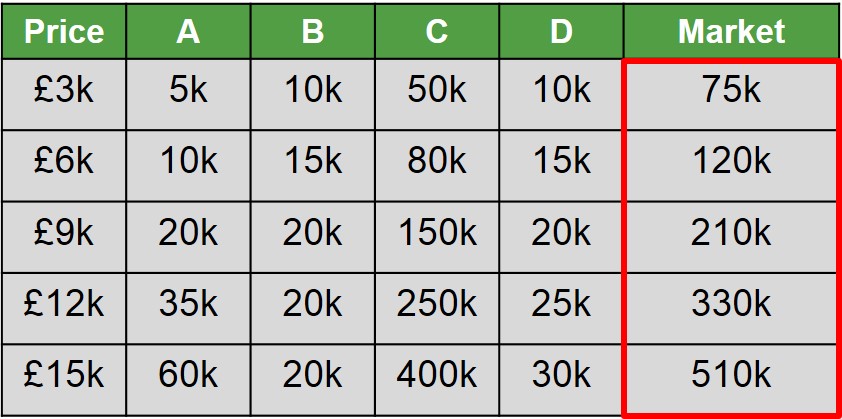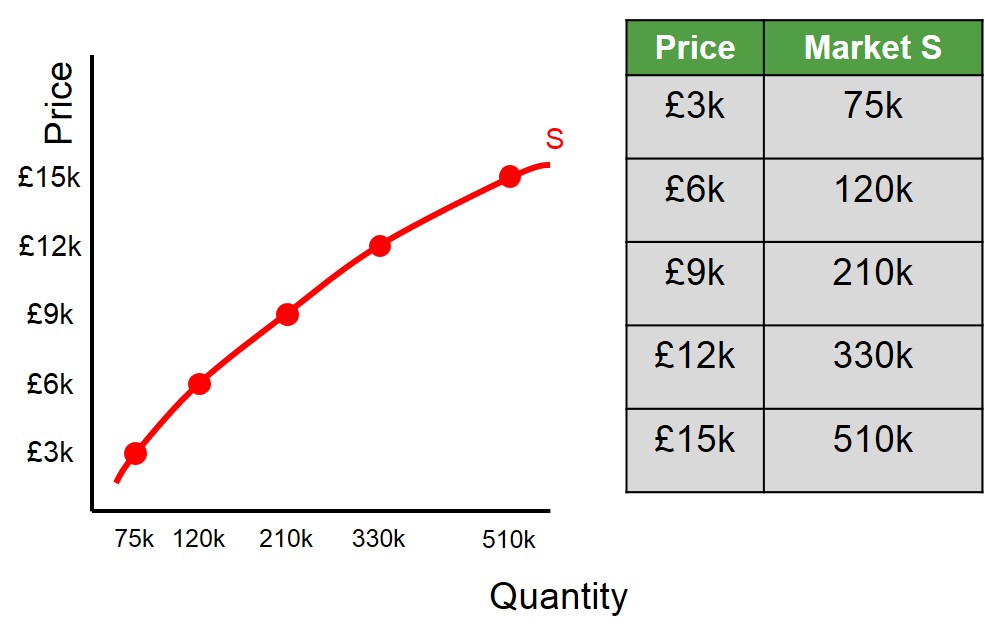The total supply at a given price of all the individual suppliers in a market.
Below is an example of how to derive the market supply curve. At every individual price, it needs to be calculated how many firms are willing to produce/supply a certain amount of goods. This is shown in the table below.

Below is the illustration of the market supply curve using the data in the table. As can be seen from the graph, the supply curve for the market has the same basic upward-sloping shape as the individual firm supply curve, to signify that the market will always be willing to supply more goods the higher the price is. This is because of the profit incentive associated with bigger margins.
